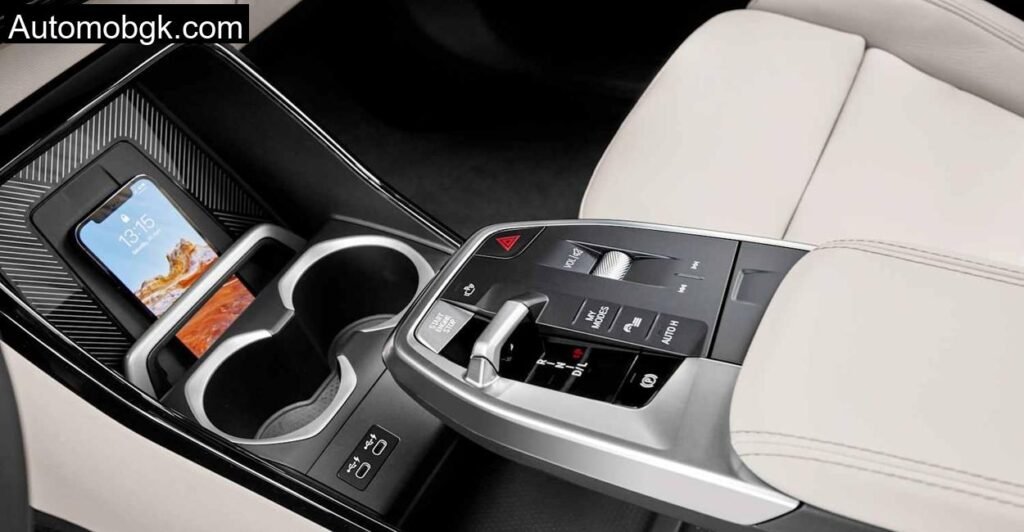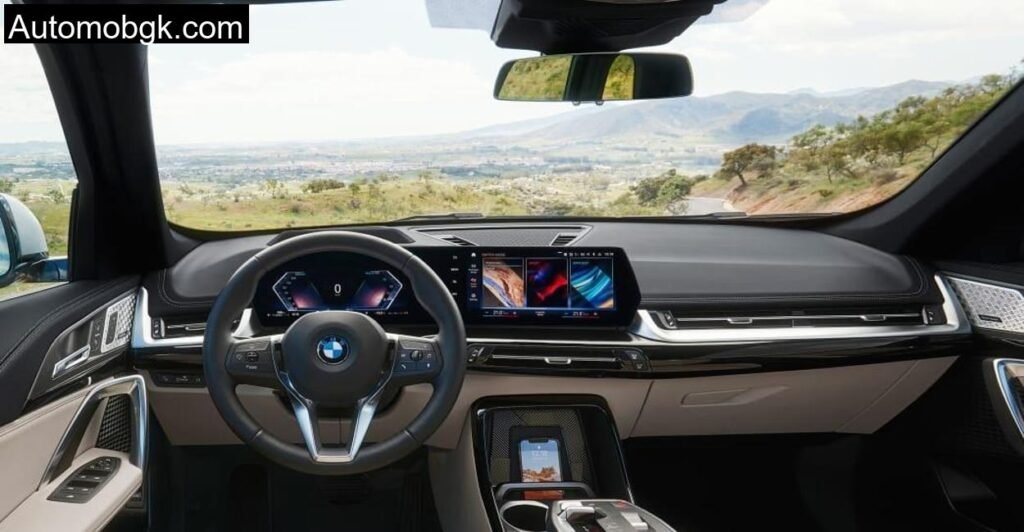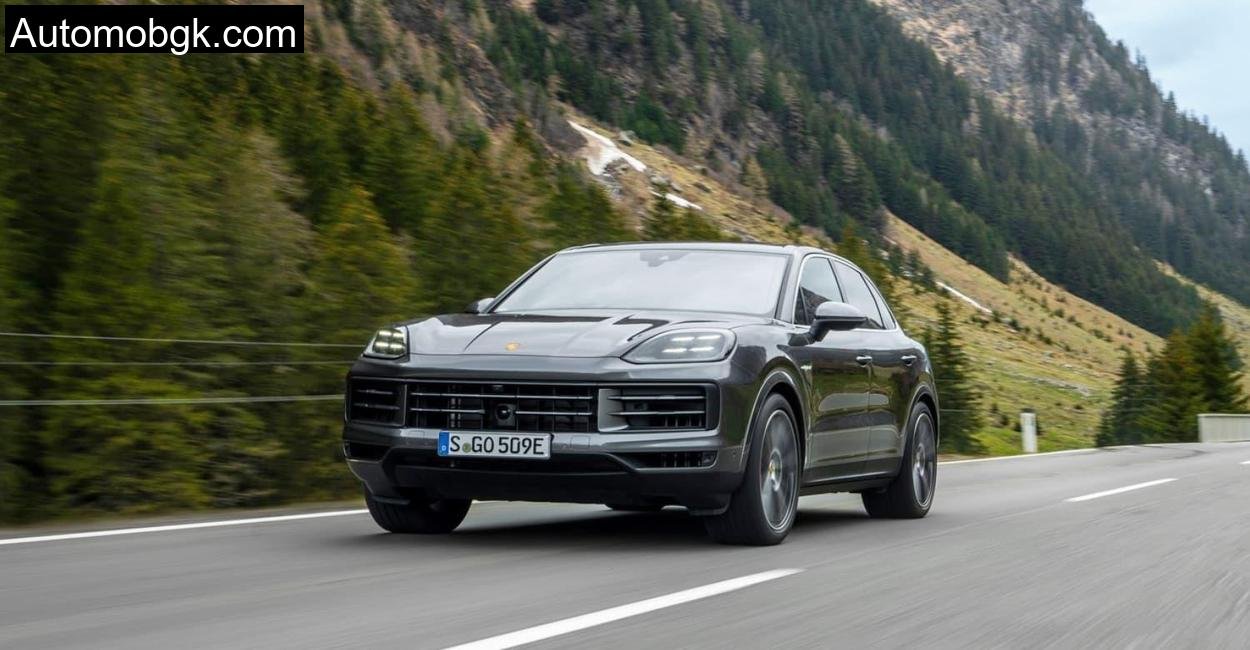Germany’s Idar Forest, a terrain of undulating backroads, gravel switchbacks, and undisturbed beauty, proved a worthy crucible. This was not just a photoshoot. This was where technology met terrain. Where spec sheets were either justified, or exposed. And the BMW X1 plug-in hybrid, fresh from its 2024 facelift, was about to show what it’s really made of.
Facelift 2024: X1 with New Cockpit
From the driver’s seat, the new cockpit was the first thing that struck me, minimalist yet intuitive. Gone are the tactile iDrive knobs of old. At first, I missed them. Years of muscle memory made me reach out for that classic rotary dial. But once I grasped the touchscreen logic, it clicked, fluid, responsive, and well-structured.
The floating curved display wrapped around my peripheral vision, giving the cabin a cockpit-like command center. The voice assistant handled most commands well, though asking it to find the nearest forest trail made it briefly confused with a tourist attraction.
The head-up display was flawless in the winding forest. Arrows floated mid-air as I threaded the X1 between trees and into switchback climbs. I used the “Augmented View” feature only briefly, handy in towns, but here in the wild, the HUD stole the show.
Inside, space felt generous. I had two bags in the rear seat and gear in the back, and everything slotted in neatly. The rear bench adjustment added practicality, moving it forward helped fit in a cooler box for lunch. Whether you’re heading into the woods or taking the family to the coast, this X1 cockpit hits the sweet spot between tech and comfort.
BMW X1 Engine Range
BMW isn’t playing small with its smallest SUV. You get the sense they want a version for every kind of driver, and they’ve nearly done it.
The base engine is the X1 18i,a 136 hp three-cylinder, ideal for city use and light touring. Then there’s the 20i and the 23i, both getting progressively stronger. The latter has 218 hp and all-wheel drive, a perfect middle ground between performance and practicality.
There’s diesel, too,X1 18d, 20d, and 23d, ranging from 150 hp to 211 hp, all with that solid torque punch diesels are known for. The star, however, is the M35i xDrive. A spicy 300 hp performance model that looks like it’d feel just as at home on the Autobahn as on a winding Alpine route.
But the hero of today’s ride was the xDrive 30e. A 240 kW (326 hp) plug-in hybrid, combining the best of electric silence and petrol urgency.
In the Test: The Plug-in Hybrid with 326 HP

Climbing through the forest tracks, I toggled into hybrid mode. The X1 30e quietly surged forward. In full EV mode, it whispered across the first few kilometers like a prowling cat, 65 km of electric range enough to explore without waking the forest.
The combined drivetrain was a marvel. In tight curves, the electric motor punched in early, and the 1.5L turbo-petrol followed through like a well-rehearsed duet. Even with the SUV’s 1.9-ton curb weight, it moved with intent.
From 60 to 100 km/h, it clocked 3.1 seconds, on par with hot hatchbacks. And in the wilds of Idar Forest, with its sudden inclines and cambered bends, this instant response wasn’t just fun. It was confidence-inspiring.
Battery depleted? No problem. The petrol unit alone still held its own. Fuel consumption hovered at 7.0 L/100 km once the battery drained, a realistic figure from my mixed terrain run.
Charging at the forest edge café on a 7.4 kW AC plug took just over two hours. I sipped coffee while the X1 silently sipped electrons.
Driving Fun with Just 136 HP
Two days later, I swapped for the X1 18i sDrive, BMW’s humble, front-wheel-driven base variant. 136 hp. Three cylinders. No electric assist. Expectations were dialed down.
But what a surprise.
The 1.5-liter engine was feisty. On paper, 0–100 km/h in 9.2 seconds seemed modest. But on twisty forest roads, where power delivery and throttle response matter more than sheer output, the little engine held its own. Acceleration from 60 to 100 km/h came in at 5.1 seconds. Enough to overtake a lumbering campervan without sweat.
It wasn’t as planted as the AWD hybrid, but it felt more playful. Lighter, more communicative. A bit like dancing in hiking boots versus trail runners. You feel everything, every pebble, every creak. And that can be part of the charm.
Fuel consumption was solid too,6.9 L/100 km in ADAC’s cycle, close to my own real-world results. No loud drone from the engine, no annoying vibrations. BMW’s refinement game is strong.
Compact SUV with Good Handling

Handling is where the X1 consistently shines. Whether it’s the base 18i or the hybrid 30e, the dynamics never falter.
The Adaptive M suspension was equipped on both test models. Despite being labeled “adaptive,” it’s really a fixed setup with lowered ride height and tighter damping. While it’s great on smooth asphalt and adds a sense of sportiness, it made gravel forest trails feel harsher than they needed to be.
But give it a proper road, and the X1 flies. In the ADAC evasive maneuver test, the 30e equipped with 245 tires on 19-inch wheels danced between cones like a seasoned rally driver. Precision, poise, and predictability. No surprises. Just clean inputs and clean exits.
And through the hairpins of Idar’s forest passes, this control mattered. With heavy rains making the roads slick, the X1’s feedback-heavy steering and stiff chassis made for engaging and confident progress.
Technical Specification
| Model | BMW X1 xDrive 30e |
| Drivetrain | Plug-in Hybrid AWD |
| Power Output | 240 kW / 326 hp |
| Torque | 477 Nm (combined) |
| 0–100 km/h | 5.6 seconds |
| Top Speed | 205 km/h |
| EV Range (Real-world) | ~65 km |
| Battery Capacity | 16.3 kWh |
| Charging Time (7.4 kW) | ~2.2 hours |
| Fuel Consumption (Hybrid) | 3.1 L/100 km |
| Fuel Consumption (Battery Depleted) | 7.0 L/100 km |
| Weight | ~1,940 kg |
| Cargo Volume | 390–1365 liters |
| Base Price (Germany) | From €51,600 |
Conclusion
The Idar Forest tested both man and machine, and the X1 came out gleaming. BMW’s smallest SUV continues to be a benchmark for the compact class. The facelift brings a futuristic cockpit, more refined software, and a plug-in drivetrain that delivers real-world range and real excitement.
From the sprightly 18i to the powerful 30e, each model has a distinct character. And whether you’re hugging corners on a winding hill climb or silently coasting through woodland trails, the X1 is competent, capable, and, most importantly, fun.
It’s not without its quirks. The absence of physical controls might irk traditionalists, and the ride on Adaptive M suspension can be jarring on rough roads. But as a whole, this is a deeply satisfying machine to live with, even for someone who prefers forest trails to freeways.
How long does it take to charge the BMW X1 plug-in hybrid?
With a 7.4 kW AC charger, the battery of the BMW X1 xDrive 30e can be fully charged in just over two hours.
Is the entry-level X1 18i powerful enough for long-distance driving?
Yes. While it has 136 hp, it offers smooth power delivery, decent acceleration, and efficient cruising capabilities, making it suitable for both city and highway use.
Does the new touchscreen-only cockpit take time to get used to?
Initially, yes. But BMW’s interface is logically structured and responsive. After a short adjustment period, it becomes intuitive and easy to use, even while driving.






